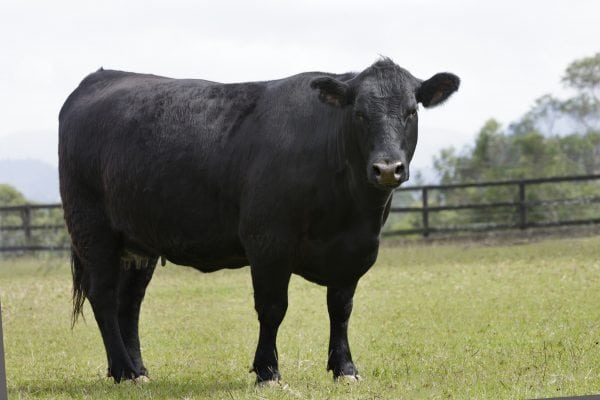*This is an excerpt from Beef Conformation Basics, ANR-1452.
Pasterns are also important to consider when evaluating structural correctness in beef cattle. The pastern is generally understood to be the joint between the cannon bone and the hoof. They play a role in both providing cushion and support as cattle walk and stand. The ideal slope of the pastern is between 45 and 47 degrees. Cattle whose pasterns have an angle between 45 and 47 degrees are more desirable because this allows the joints to function properly. Figures 3 and 4 show two calves at opposite ends of acceptability. The calf in Figure 3 is minimally acceptable in terms of having enough angle to his pasterns to provide enough cushion and support. The calf in Figure 4 has considerably more angle to his pastern, which in turn provides more flex and cushion when walking.
If the pastern angle becomes greater than what is seen in Figure 4, support can become an issue as the animal gains weight. Of the two extremes, cattle that lack enough angle, or set, to their pasterns (Figure 3) generally will have more lameness issues and decreased longevity in the herd when compared to cattle with too much set. The pastern shown in Figure 5 is closer to what should be considered ideal. It is critical to closely evaluate feet and leg structure of all cattle in the herd because these are the foundation of every animal. Poor structure will quickly force an otherwise genetically superior animal out of the herd.


